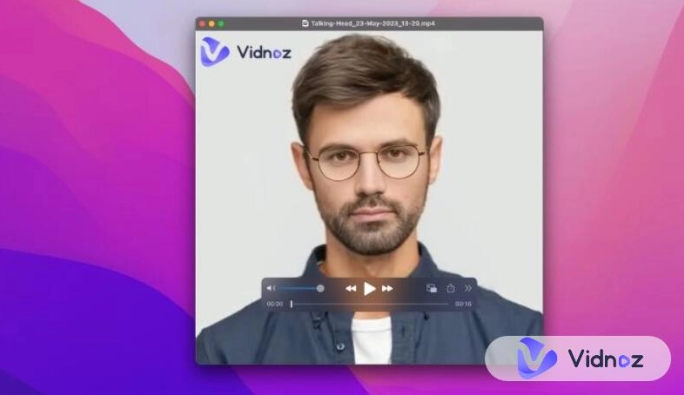In the rapidly evolving landscape of artificial intelligence (AI), little advancement has captured the imagination as vividly as the development of realistic AI talking heads. The intersection of AI, computer graphics, and speech synthesis has given rise to technologies like Vidnoz, which are revolutionizing the way we interact with digital content. These sophisticated systems have the ability to create lifelike virtual characters that not only look real but also speak and emote convincingly.
Unveiling Vidnoz
Vidnoz represents a significant leap forward in the field of AI-generated media. The technology combines advanced techniques from computer graphics, deep learning, and speech synthesis to produce eerily realistic virtual characters. These characters often referred to as “talking heads,” possess the ability to simulate human-like facial expressions, lip movements, and speech patterns. This convergence of technologies enables them to convey emotions, articulate speech, and even engage in dynamic conversations.
At the core of Vidnoz Voices lies sophisticated neural network architecture. This architecture is trained on vast amounts of audiovisual data, including videos of real people speaking and emoting. Through a process known as deep learning, the network learns to capture the intricate nuances of facial movements and vocal inflections. This enables the AI to generate synchronized lip movements, facial expressions, and corresponding speech sounds that align seamlessly, creating the illusion of a genuine interaction.
Applications across Industries
The applications of Vidnoz span numerous industries, each benefiting from the technology in unique ways. In the entertainment sector, filmmakers and game developers can use AI-generated characters to bring digital worlds to life. These characters can act as virtual actors, eliminating the need for human actors in certain scenes or roles. Additionally, Vidnoz Voices open up avenues for immersive storytelling, where users can interact with characters and influence the narrative.
In the realm of education, AI talking head can serve as interactive virtual tutors. Imagine a history lesson where historical figures engage in dialogues, answering students’ questions and making the learning experience more engaging. Language learners could converse with AI characters to practice speaking and listening skills in a controlled environment.
From a business perspective, Vidnoz holds the potential to enhance customer service and communication. Companies could employ AI-generated avatars for customer support, providing personalized assistance in real-time. These virtual representatives could simulate human interactions, offering a consistent and responsive customer experience.
Ethical Considerations
While the possibilities introduced by Vidnoz are exciting, they also give rise to a host of ethical concerns. One notable concern is the potential for misinformation and manipulation. AI-generated characters could be used to create convincing deep fake videos or spread false narratives, blurring the lines between reality and fabrication. This raises questions about the authenticity of digital content and the need for robust mechanisms to verify its origin.
Privacy is another critical consideration. As AI-generated characters become more indistinguishable from real individuals, the line between public figures and fabricated personas could blur. This has implications for consent and the use of individuals’ likenesses without permission. Striking a balance between creative freedoms and respecting privacy rights will be a challenge as this technology evolves.
Final Words
Vidnoz represents a remarkable stride forward in the AI landscape, showcasing the power of combining computer graphics, deep learning, and speech synthesis. Their potential to reshape entertainment, education, and business interactions is significant, promising more engaging and immersive experiences. However, as with any groundbreaking technology, careful consideration of the ethical implications is essential to ensure that Vidnoz Voices are harnessed responsibly and ethically. As researchers, developers, and society navigate this evolving terrain, finding the right balance between innovation and ethical considerations will be paramount in shaping the future of AI-generated talking heads.


 Home
Home









